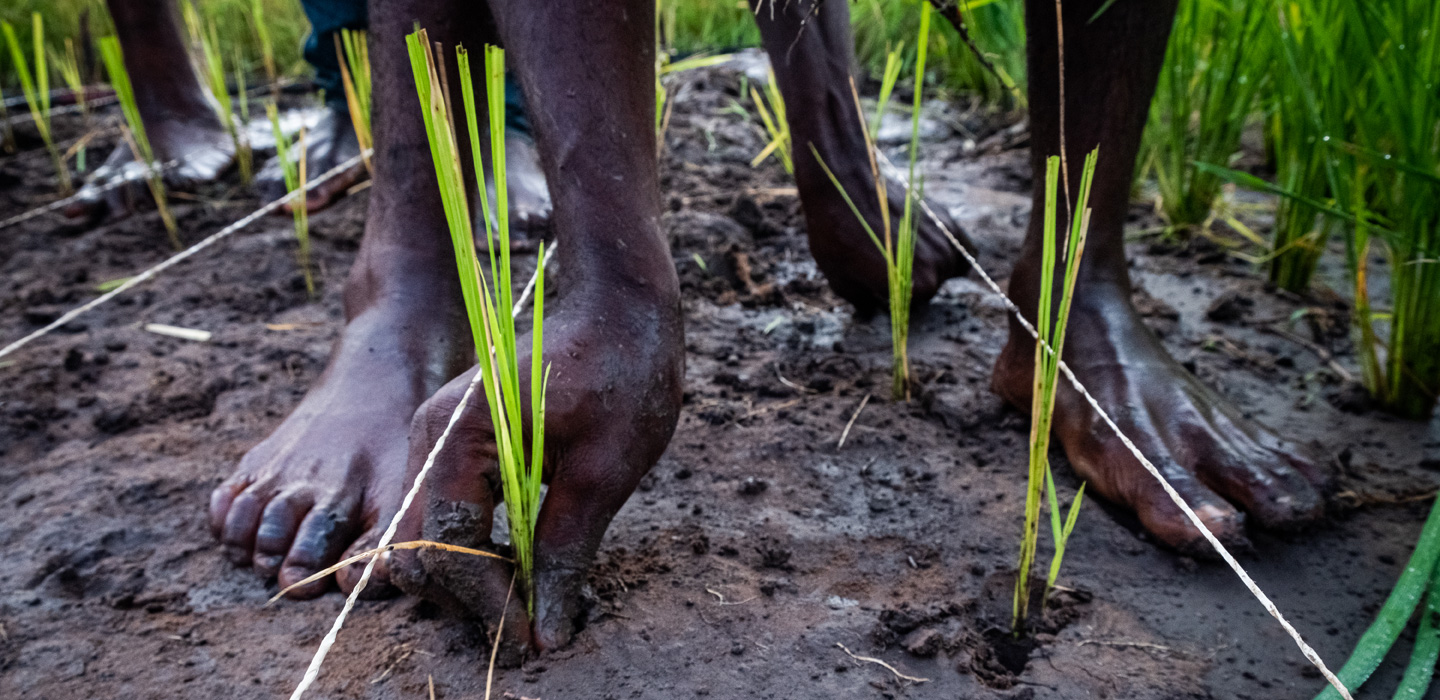What we can do to support farmers on the front lines of climate change
IFAD Asset Request Portlet
Asset Publisher
What we can do to support farmers on the front lines of climate change
Estimated reading time: 4 minutes
©IFAD/ Bernard Kalu
Each of the world’s agricultural production systems had millennia to adapt to local climatic conditions, especially in terms of temperature and rainfall. Nevertheless, the industrial revolution that began in the nineteenth century has already had enormous effects on the global environment, with temperatures on the rise, rainfall becoming more erratic, and the hydrological cycle accelerating to a rhythm beyond local systems’ capacities to adjust.
Fortunately, since 2017, agriculture water management has been part of major climate negotiations. The global and regional models used to inform these negotiations anticipate the urgent need to adopt both adaptation measures (such as for water scarcity and excess) and mitigation co-benefits (e.g. the reduction of greenhouse gas emissions, carbon sequestration) to maintain sufficient levels of agricultural production.
We already know a lot about irrigation. It uses 69 per cent of all water withdrawals worldwide, and irrigated lands generate about 40 per cent of global agricultural production. Rainfed lands, in contrast, generate about 60 per cent of all production – yet we know much less about the water in the soil of these areas! And regions like these are where the poorest people tend to live – and where the greatest vulnerabilities of our production systems lie.
Today, there are 2.1 billion poor people and 767 million people living in extreme poverty, 80 per cent of whom live in rural areas, where agriculture is the main source of livelihood. Climate change could cause an additional 100 million people to suffer from extreme poverty by 2030, with weather-related shocks decreasing rural incomes and progressively undermining the resilience of rural farmers and forcing them out of agriculture.
Many of these rural producers work in rainfed areas and are thus already highly vulnerable to any threat to the water supply. Although they have generally been able to adapt to long-term changes, more immediate threats such as increasingly erratic rainfall (in terms of intensity, duration and frequency) are proving too much to handle, and they are unable to adapt quickly enough. Meanwhile, they continue to absorb 80 per cent of the effects of droughts. Nevertheless, their position on the front lines of climate change gives them an opportunity to contribute to mitigation measures like improving moisture retention in the soil, increasing water percolation to aquifers, and sequestering carbon through root growth.
These 475 million smallholders have never ceased in their efforts to adapt, but they need support. To confront the challenge of a changing climate, we need to lift the limitations these smallholders face and put their know-how into practice.
We already know which technical actions need to be taken, but they need to be applied and scaled globally for maximum effect. Here are just a few that are of high relevance for rainfed smallholder farmers.
Adaptation: Focus on defining and sponsoring locally relevant adaptation solutions through climate-smart agriculture and sustainable water management
Climate-smart agriculture supports a sustainable increase in production while reducing the inputs used and the emissions generated. Sustainable water management enables farmers to better adapt to rising temperatures and more erratic rainfall.
- Improve rainfed agricultural practices to improve soil moisture retention, limit evaporation loss
- Enable access to information on climate, soil moisture information
- Tackle the remaining climate risk with green infrastructure (e.g. rainwater harvesting, sand dams) at landscape level along with supplementary irrigation water services powered with renewable energy
- Link water budgeting of local agriculture to basin-level hydrology and groundwater recharge
- Make crop insurance more available to smallholder farmers
Mitigation: Support the expansion of efficient mitigation measures at different geographic scales (plot, farm, landscape)
- Improve land and water management to reduce inputs, favour carbon sequestration, facilitate soil moisture retention and percolation (e.g. agroforestry; soil and water conservation for effective drainage management)
- Alternate wet-dry cultivation of rice (e.g. the System for Rice Intensification)
- Promote systematic use of renewable energy to meet demand for pumping water
For the past 40 years, IFAD has worked with the rural poor to help them overcome poverty. Our efforts are tailored to the unique challenges faced in each area, such as our recent work to help the people of Kenya’s Nyeri county manage rainfalls and harvest water. As we take this opportunity on World Water Day to reflect on efforts like these, we reaffirm our commitment to bring our full experience to bear by 2030: to reach out to 200 million smallholder farmers, to improve the resilience of 110 million people and to raise the incomes of 264 million men and women by at least 20 per cent.
Water is the medium through which we experience most of the impacts of climate change.
— International Fund for Agricultural Development (@IFAD) March 24, 2020
Sustainable water management is an essential part of the solution to #climatechange.
2020 'Water & Climate Change' report https://t.co/IVbCQ2YVa9 #WWDR pic.twitter.com/5VPAxJiT6v
We’ve also got some more video resources here:
- The key takeaways from the WWDR
- Message from Gilbert Houngbo, President of IFAD and Chair of UN Water
- Above and Beyond: NASA's Research on Climate Change
This video explains the role of plants in sequestering carbon and illustrates the consequences of the Industrial Revolution.
